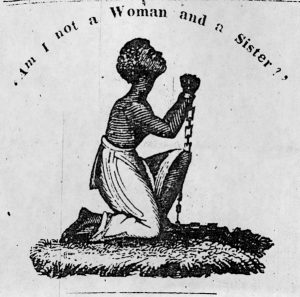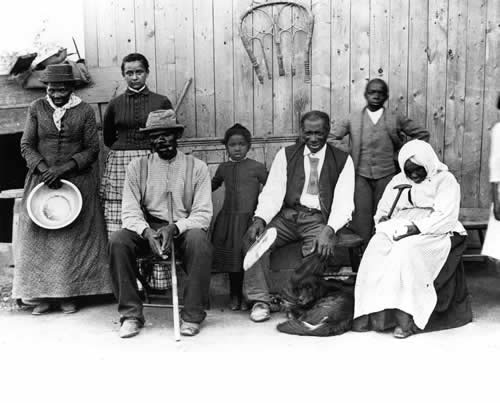Before the late 1970s, the experiences of enslaved women were merely discussed in the media. Their sufferings and struggles were often marginalised from that of enslaved men. It was barely known until the release of several books and articles about the lives and tragedies that enslaved women experienced. Books such as “The Rebel Woman in the British West Indies during Slavery” by Lucille Mair (1975), and “The Arrival of Black Women” in the Jamaica Journal in 1975, would depict the roles and lives of slave women in the Caribbean.
The representation of enslaved women in the first newspaper of Mauritius, ‘Annonces, Affiches, et Avis Divers pour Les Colonies des Isles de France et de Bourbon’, can only be described as atrocious. It advertised the age, profession and appearance of the slaves as though they were inanimate objects. Young women were more in demand by the settlers, especially when the slaves were specialised in jobs like housekeepers or chambermaids, servants, laundresses, seamstresses, and hairdressers, among others. On top of that, many girls became mothers at a very young age. In the 10th March 1773 issue of the newspaper, it was announced that there was a mother who was around 22 years old, for sale, together with her ten years old daughter. It can be deduced that the mother got pregnant when she was 12 or 13 years old. This leads us to ask questions about the treatment of children and women in the hands of the colonisers, and also in those of male slaves.
The punishment and struggles of enslaved women were just as bad as it was for men. The breeding of enslaved women was a common practice by the oppressors in the 1700s. The latter would force the reproduction of slaves to increase profit, especially after the ban of the Atlantic slave trade and a rise in demand for cotton gin. They were encouraged to breed through incentives such as a reduction in working hours, and an extra allowance of food for pregnant women. All the babies born in slavery were considered as the property of the oppressors, and also free labour. Moreover, pregnant women were not treated differently from other female slaves. The mistreatment would often cause premature births and miscarriages.
During that time, the main goal of the slaves was survival. They would do anything to survive, and this is the reason why many enslaved women bought into the idea of concubinage with their oppressors. However, many others were raped and used as sexual objects. Mary Lumpkin was one of many victims in this situation. She lived with Robert Lumpkin, who owned a slave prison in the 1830s in Virginia. He raped her, and she gave birth to seven of Lumpkin’s children.

Besides, contraception and infanticide were a form of resistance. Contraception was considered as an act of rebellion because slave owners wanted to increase the slave population, without the cost of purchase. Nonetheless, many enslaved women wanted to get rid of unwanted pregnancies, and they would use abortifacients such as Peacock Flower. Other women would resolve into infanticide. One such woman was Sabrina Park, who was a Jamaican slave. She was executed after being brought to trial for the murder of her child, whom she did not want to become a slave.
Many women were born into slavery and spent most of their life resisting it by becoming abolitionists. Sojourner Truth was the first black woman to win a court case against a white man in 1828. She was born into slavery, and after being freed, she became an abolitionist and human rights activist who preached that all women are to be treated equally, including black women. Harriet Tubman escaped slavery and rescued more than 70 enslaved people while risking her own life and freedom. Mary Prince, who through her book, showed that domestic slaves were as in danger as those on the fields. In her autobiography, ‘A History of Mary Prince’, she wrote about her experiences and how domestic slaves were more prone to punishment and violence as they were on the front line.
The question that needs to be asked is how did racism reach the point it did. Have we not grasped anything from history? Racism is a learnt prejudice, and it becomes pertinent when the institutions of society fail to teach their children the value of all lives. Ignorance and intolerance have been the cause of many conflicts, and it is still the source of racism. Reality is that history was written by colonisers who rewrote it to portray themselves in a positive light. Miseducation has crossed generations, and as a result, there are some races and religions that feel superior to others. The world will be less ignorant when the education system decides to include in their curriculum the reality of slavery, genocide and racism while every race, ethnicity and religious groups assume the role they played in it. It would allow children to learn from the mistakes made by their ancestors. Consequently, understanding tolerance, respect, and to love each other irrespective of one’s race, skin colour, ethnicity and religion will change the future and lead to a more progressive society.
Sources:
Altink Henrice,2002. Representations of Slave Women in Discourses of Slavery and Abolition, 1780-1838.
Anita Sethi, 2020. Stella Dadzie: ‘Women resisted slavery at every stage of the journey’. The Guardian.
Annonces, Affiches, et Avis Divers pour les Colonies des Isles de France et de Bourbon, janvier 1773- décembre 1774.




